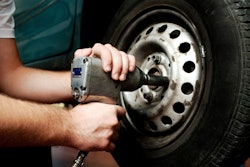Keeping equipment, tools, and vehicles in top working order is as critical to a contractor as keeping a surgical knife sharp and sterile is to a brain surgeon. Can you imagine the problems a brain surgeon would face if his cutting tools were dull, rusty, or dirty?
The importance of maintaining equipment, tools, and vehicles is well known and accepted by most contractors. But in my consulting I continue to see a shortage of visible measurements that reflect the contractor's commitment to preventive maintenance.
Measuring preventive maintenance (also known as PM) is not complicated to set up and continue. It involves monitoring the consistency that PM is being completed and at what costs to perform. Consider a few tips when creating a PM schedule.
To begin, identify all critical equipment, tools, and vehicles your business uses to complete work. Then, secure any maintenance guidelines provided by the manufacturer or distributor of the item in question. Just as car companies provide recommended times to change the oil, replace belts, inspect tires, etc., so to do most providers of equipment and tools. (If you have lost such information, contact your local equipment or tool distributor, or check out the Internet to chase down companies.)
After securing the needed guidelines, get insights from your employees concerning the recommended times for providing PM. I have found that equipment manufacturers will often recommend more stringent PM schedules, partly out of protecting their product liability. So use common sense when formalizing your PM schedules. You will most likely follow the manufacturer's recommendation for most items but be open to your own hands-on experience.
Once you have agreed on the recommended PM schedule and what needs to be completed at each PM effort, put this information on paper, laminate the schedule, and post the information wherever it will be in clear view of those responsible. To maintain and monitor PM for your vehicles, create a checklist of items that should be performed daily (such as checking oil, tires, transmission fluid, belts, etc.)
Make your PM schedule easy to follow and easy to document. Use some form of a checklist where the employee can simply check off that a PM procedure has been completed. Also, there should be space provided for the employee to record what action was taken to maintain the piece of equipment. This might include some of the following items:
- Oil added? How much?
- Belt changed? Number of belt? Life of belt replaced?
- Tire air pressure checked? How much added? What is pressure of tires before adding air?
- Grease added to fittings or bearings? How much? Date of last grease added?
- Blade replaced? Last replacement date? Condition of blade replaced?
Once you have the items and schedule formalized, you will need to monitor that each PM item is completed weekly, monthly, quarterly as scheduled. Also, you will want to track the amount of oil, grease, belts, etc., used to provide proper preventive maintenance.
One positive measurement that should be realized if your crews are executing proper preventive maintenance is the decreasing amount of "down time." Down time due to broken down equipment or faulty tools costs a lot of time and reduces profitability. So if your tracking of PM schedules indicates your crews are doing what you are asking them to complete you should also see that your crews are working more consistently without breakdowns.
Employees often shelve preventive maintenance if left to their own devices. As an owner or crew leader, you must realize that every tool, piece of equipment, and vehicle you own can only perform its intended work if it is in top operating condition. Your employees are the keys to keeping such resources in prime condition.
Help your people out by creating PM schedules and then tracking the schedules to see that needed PM is completed. You will not only keep more of your equipment and vehicles operational, you'll position your crews to accomplish more work and to produce more quality work!



















